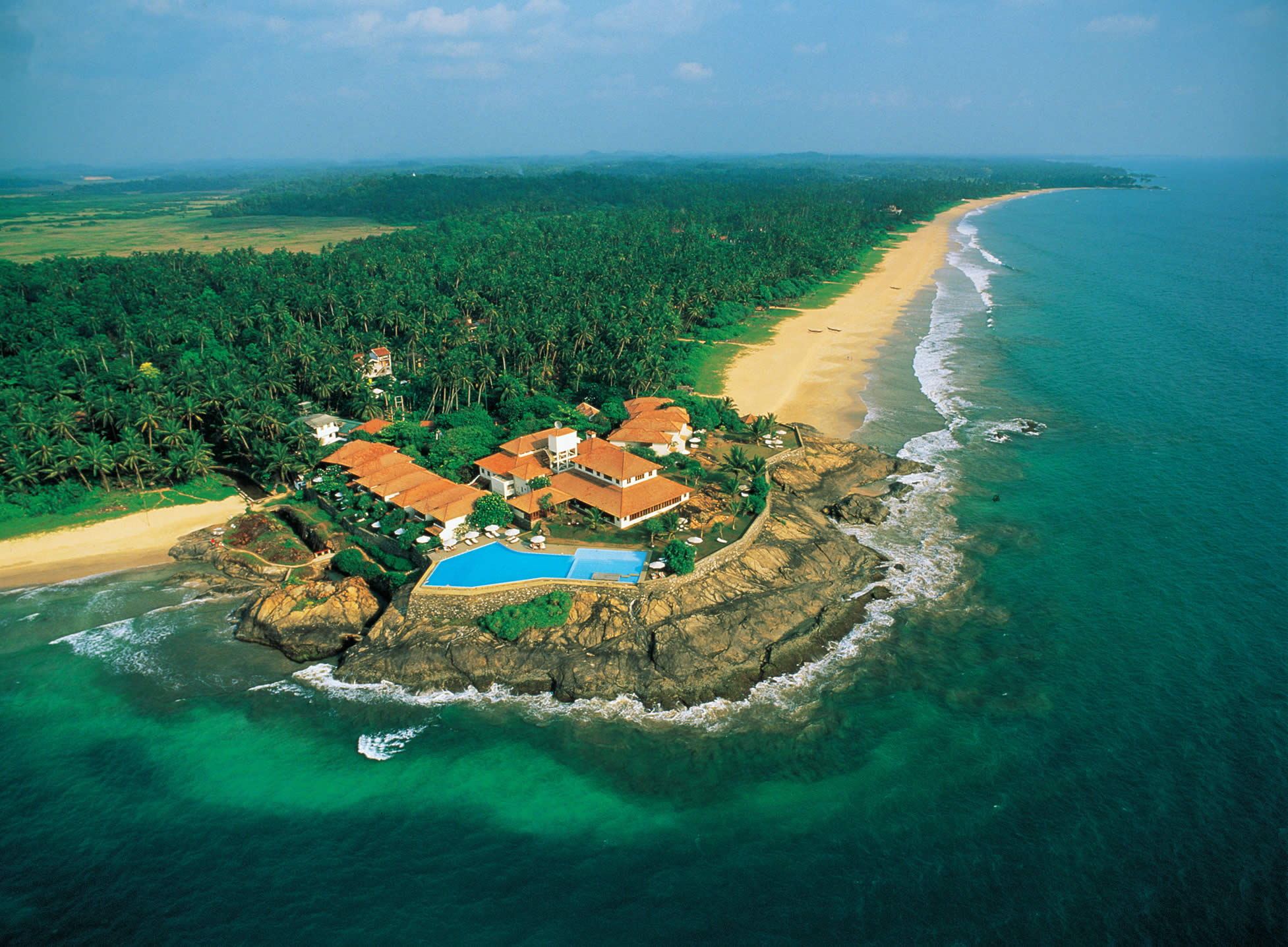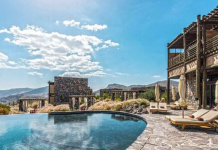Sri Lanka leaves one spellbound with its breathtaking natural beauty, historical legacy and structural charm. Alpana Roy reports from this scenic country.
If you are looking for a destination with pristine beaches, misty mountains, abundant wildlife, verdant tea estates and a majestic past, then you need to look no further than Sri Lanka.
Few places in the world can offer the traveller such a remarkable and mind-boggling combination of tourist destinations within such a compact location. Within a mere area of 65,610kilometres lie eight UNESCO World Heritage Sites, 1,330 kilometres of coastline – much of it pristine beaches – 15 national parks showcasing an abundance of wildlife, nearly 500,000 acres of lush tea estates, 250 acres of botanical gardens, 350 waterfalls, 25,000 water bodies, and a culture that extends back to over 2,500 years.
Set in the Indian Ocean in South Asia, the tropical island nation of Sri Lanka has a history dating back to the birth of time. It is a place where the original soul of Buddhism still flourishes and where nature’s beauty remains abundant and unspoilt. This is an island of magical proportions, once k nown as Serendib, Taprobane, the Pearl of the Indian Ocean, and Ceylon. Given below are a list of must-see places in this Pearl of the Indian Ocean.
Kandy
Kandy is known for its scenic beauty and rich cultural value. Spread over an area of around 1940 square kilometres, the city promises a number of tourist attractions that include the Old Royal Palace and the famous Temple of Tooth. The latter consists of the sacred relic of Buddha’s tooth because of which Kandy is regarded as one of the most sacred places by Buddhists. Other holy spots include the Gadaladeniya Temple and the Lankathilake Temple. The Royal Botanical Garden, Peradeniya is situated about five kilometres to the west of the city centre at Peradeniya and is visited by two million visitors per year. It is the largest botanical garden on the island extending to 147 acres and containing over 4,000 species of plants.
Negombo Lagoon
Negombo is a large estuarine lagoon in south-west Sri Lanka. The lagoon is fed by a number of small rivers and a canal. It is linked to the sea by a narrow channel to the north, near Negombo city. It is surrounded by a densely populated region containing rice paddies, coconut plantations and grassland. The land is used for fishing and agriculture. The lagoon has extensive mangrove swamps and attracts a wide variety of water birds including cormorants, herons, egrets, gulls, terns and other shorebirds. Located in Negombo, a short drive away from the International Airport, Jetwing Sea is a peaceful retreat by the magnificent Indian Ocean offering contemporary elegance. A beachfront hotel, Jetwing Sea offers quality accommodation with a range of in-room amenities to aid you in having a comfortable stay. A fully equipped and rejuvenating spa, infinity pools and with restaurants offering you a host of delicacies that depict Sri Lankan cuisine and as well as international dishes will definitely be an added feast to your holiday by the beach.
Sigiriya
Sigiriya is located in the Mataledstrict of the Central Province, in an area dominated by a massive column of rock which is nearly 200 metres high. According to the ancient Sri Lankan chronicle, the Culavamsa, the site was selected by King Kasyapa (477–495 AD) for his new capital. He built his palace on the top of this rock and decorated its sides with colourful frescoes. On a small plateau about halfway up the side of this rock he built a gateway in the form of an enormous lion. The name of this place is derived from this structure – Sihagiri, the Lion Rock.
Sigiriya consists of an ancient castle built by King Kasiappan during the fifth century. The Sigiriya site has the remains of an upper palace situated on the flat top of the rock, a mid-level terrace that includes the Lion Gate and the mirror wall with its frescoes, the lower palace that clings to the slopes below the rock, and the moats, walls, and gardens that extend for some hundreds of metres out from the base of the rock. Despite its age, the splendour of the palace still offers a stunning insight into the ingenuity and creativity of its builders. The upper palace on the top of the rock includes cisterns cut into the rock that still retain water. The moats and walls that surround the lower palace are still exquisitely beautiful. Sigiriya today is a UNESCO-listed World Heritage Site and one of the best preserved examples of ancient urban planning.
NuwaraEliya
The town’s attractions include a golf course, trout streams, Victoria Park, and boating and fishing on Lake Gregory. Victoria Park is an attractive and well-used oasis. It is popular with birdwatchers at quieter times because of the good opportunities it gives to see various species, particularly the Indian Blue Robin, Pied Thrush or Scaly Thrush lurking in the denser undergrowth. The Kashmir Flycatcher is another attractive bird species found in the park.
The city is a base for visits to Horton Plains National Park. This is a key wildlife area of open grassy woodland. Species found here include the leopard, sambar, and the endemic Purple-faced Langur. Endemic highland birds include the Dull-blue Flycatcher, Sri Lanka White-eye, and Yellow-eared Bulbul. The plains also have a well-visited tourist attraction at World’s End, a sheer precipice with a 1050m drop. The return walk passes the scenic Baker Falls. Early morning visits are best, both to see the wildlife, and to view World’s End before mists close in during the later part of the morning. One of the distinctive features of NuwaraEliya’s countryside is the widespread growing of vegetables, fruit and flowers usually associated with temperate Europe. This ‘Little England’ is covered with terraces growing potatoes, carrots, leeks, and roses, interspersed with tea bushes on the steeper slopes. Especially at NuwaraEliya you would find acres and acres of tea plantations covering the hill slopes with green everywhere. NuwaraEliya with the necessary elevation, favourable mild climatic conditions and the reddish soil rich in humus produces the best Ceylon tea.
Galle Fort, Hikkaduwa and elephant orphanage
Galle Fort, in the Bay of Galle on the southwest coast of Sri Lanka, was built first in 1588 by the Portuguese, then extensively fortified by the Dutch during the 17th century from 1649 onwards. It is a historical, archaeological and architectural heritage monument, which even after more than 423 years maintains a polished appearance, due to extensive reconstruction work done by Archaeological Department of Sri Lanka. The heritage value of the fort has been recognised by the UNESCO. Hikkaduwa National Park is one of the two marine national parks in Sri Lanka. The national park contains a fringing coral reef of high-degree bio-diversity. Prior to reaching the capital Colombo, one needs to visit the ‘elephant stop’ at the elephant orphanage in Pinnawala. It houses orphaned baby and adult elephants lost in the wilderness. The orphanage offers perfect opportunity to see the pachyderms and to click some great pictures.
Hakgala Botanical Garden
Hakgala Botanical Garden is situated on the NuwaraEliya-Badulla main road, 16 km from NuwaraEliya. It was established in 1861 for the purpose of experimentation and promotion of Cinchona cultivation in Sri Lanka. Once tea replaced Cinchona, it was turned into an experimental tea cultivation. In 1884 it was transformed to a garden, and since then many sub-tropical and some temperate plants were planted in the gardens. Now the garden is famous for number of species of Orchids and Roses. Hakgala Botanical Garden lies under the shadow of the Hakgala Rock (meaning ‘Elephant’s jaw rock’). This massive rock towers to a height of about 2,200m behind the gardens and the surrounding forest reserve like a solitary giant. The gardens take the shape of several terraces upon the lower slopes of the rock and face the Uva Valley, across which some magnificent views of the Madulsima and the Namunukula range of mountains are seen in the distant landscape.
Colombo
Colombo is much like any other capital city with wide and clean roads and many tourist attractions. Make sure you pick a hotel near the Galle Face beach. You can take a long walk on the promenade or step onto the grass for some kite flying or simply stroll over to the small bridge to watch the sun come down. A visit to Independence Square and Gangaramaya Temple, a ride on the lake and bargain hunting at Pettah are the other must-do touristy things!
The capital city also boasts of a number of museums like The National Museum of Colombo, The Natural History Museum, The Dutch Period Museum, TheSapumal Foundation etc. Colombo Zoological Gardens- Colombo’s zoo- has a wide variety of animals, birds, and reptiles from all over the world. One of the most popular attractions to the zoo is the elephant show, which is held daily at 5:15pm. The zoo also offers elephant and pony rides.






